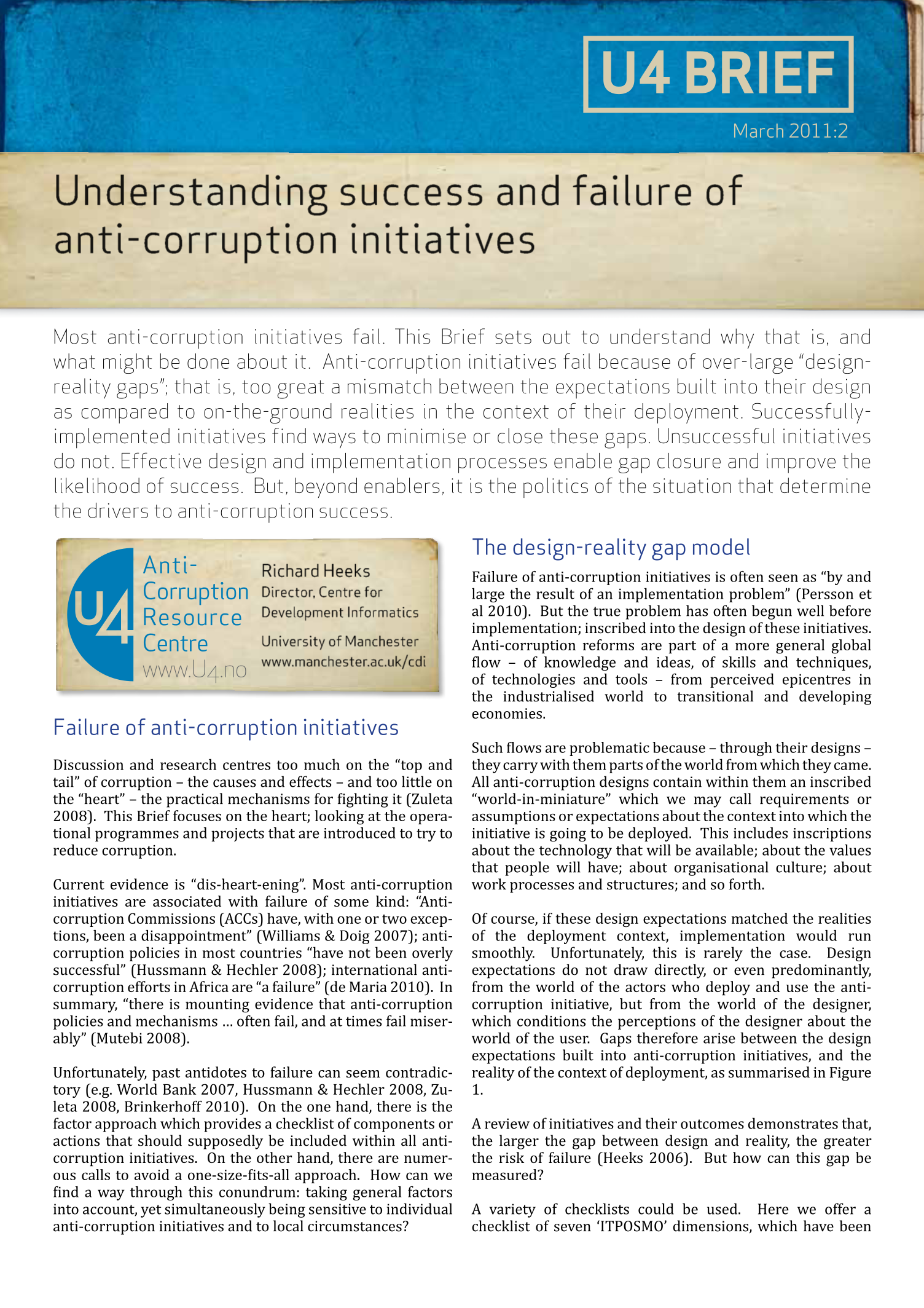U4 Brief
Understanding success and failure of anti-corruption initiatives
Most anti-corruption initiatives fail. This Brief sets out to understand why that is, and what might be done about it. Anti-corruption initiatives fail because of over-large “design-reality gaps”; that is, too great a mismatch between the expectations built into their design as compared to on-the-ground realities in the context of their deployment. Successfully implemented initiatives find ways to minimise or close these gaps. Unsuccessful initiatives do not. Effective design and implementation processes enable gap closure and improve the likelihood of success. But, beyond enablers, it is the politics of the situation that determine the drivers to anti-corruption success.

Cite this publication
Heeks, R. (2011) Understanding success and failure of anti-corruption initiatives. Bergen: Chr. Michelsen Institute (U4 Brief 2011:2) 4 p.
Disclaimer
All views in this text are the author(s)’, and may differ from the U4 partner agencies’ policies.
This work is licenced under a Creative Commons Attribution-NonCommercial-NoDerivatives 4.0 International licence (CC BY-NC-ND 4.0)

